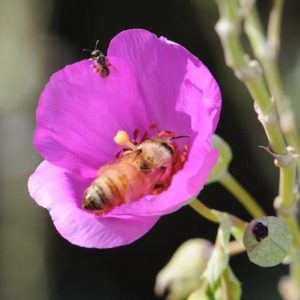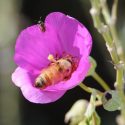New gardeners often feel overwhelmed and intimidated as they try to figure out how to plant a garden for the first time. Don’t despair; take a look around at the natural landscape and use it as a template. Go with the flow and grow plants that are of service to Mother Nature’s creatures.
First, according to the California Native Plant Society, clear your planting area of invasive plants such as vinca major, Scotch broom or English ivy. The University of California Cooperative Extension encourages the use of star jasmine, winter jasmine, and forsythia as non-invasive plants.
Consider gardening to attract pollinators. Watch birds, bees and butterflies for hours of visual pleasure as they feed, bathe, nest and look for shelter.
Fill your new garden with plants and flowers that bloom during different seasons to provide food and shelter for wildlife all year. Look for a variety of annuals, perennials, evergreens and deciduous plants best suited to your elevation and sun exposure. The North American Pollinator Protection Campaign (NAPPC) at http://pollinator.org/guides.htm has a series of excellent guides for selecting pollinator-preferred plants specific to a location.
The U.S. Forest Service suggests planting berries for food. Some examples include golden currant, Oregon grape and chokecherry. Try planting goldenrod in the fall for flowers that feed pollinators at the end of the season.
Hummingbirds are nectar feeders. They are drawn to tubular flowers such as penstemon and bee balm. The NAPPC recommends planting scarlet monkey flower to attract hummingbirds.
Birds need food, shelter and protection from the elements in winter. Berry-producing trees, shrubs and vines are ideal. Birds will enjoy elderberry, Oregon grape, wild gooseberry, Chinese pistache and holly leaf cherry. Insects provide the necessary protein to raise hatchlings. To attract insect eaters, plant Oregon grape, penstemon, ceanothus and California fuchsia.
Asters, sunflowers, salvias, cosmos and milkweed attract bees. They provide both nectar and pollen. Herbs such as lavender, thyme, basil and rosemary also have blossoms that attract bees.
Simply look for native plants that are blue, violet, white and yellow. Additional recommendations by NAPPC include blue-purple western aster, red columbine, California poppy and California goldenrod for blues, reds, yellows and oranges. Showy milkweed and wild buckwheat have lovely white perennial flowers that both attract and act as host plants for birds, bees and butterflies.
Consider adding a water feature. Place a small rock or other perching object in the water for birds and butterflies to use while they bathe or drink. If you wish to provide water year round, place a submersible heater in the birdbath to prevent the water from freezing in winter.
When planting to attract pollinators, your garden will not only look beautiful, but will be of service to wildlife and insects that live in the Mother Lode.
Dede Moreno is a recent graduate of the Tuolumne County Master Gardener program, a home horticulture training program provided by the University of California Cooperative Extension Central Sierra.




